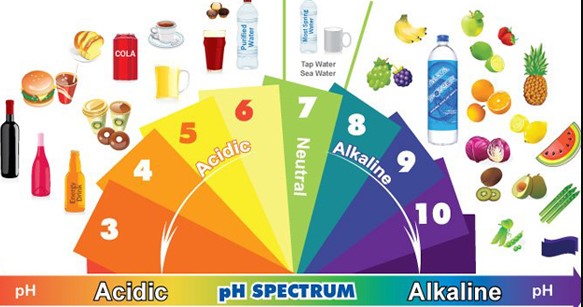BOURSESSENEGAL – Acidic foods play a significant role in our diets, impacting everything from digestion to overall health. In this article, we will explore what acidic foods are, their effects on the body, and how to balance them in your diet. If you’ve ever wondered how acidic foods might affect you, this guide is here to help.
What Are Acidic Foods?
Acidic foods are those that have a low pH level, typically below 7. These foods can stimulate gastric acid production in the stomach, aiding digestion. However, they can also cause discomfort for some individuals, particularly those with acid reflux or other digestive issues. Examples of acidic foods include citrus fruits, tomatoes, vinegar, and certain dairy products.
The Importance of pH Levels
Understanding pH levels helps clarify why acidic foods affect us in various ways. The pH scale ranges from 0 to 14, where 7 is neutral. Foods with a pH below 7 are considered acidic, while those above are alkaline. Our bodies require a balanced pH to function optimally. For instance, our blood is slightly alkaline, with a pH of around 7.4. When we consume too many acidic foods, it can disrupt this balance, leading to potential health issues.
The Benefits of Acidic Foods
Despite their potential drawbacks, acidic foods offer several health benefits. Incorporating them in moderation can enhance your well-being. Let’s dive into some of these benefits:
1. Enhanced Digestion
Acidic can stimulate the production of digestive enzymes, promoting better digestion. For instance, citrus fruits contain citric acid, which can enhance the breakdown of food in the stomach. This can lead to improved nutrient absorption.
2. Nutrient-Rich Options
Many acidic are packed with essential vitamins and minerals. For example, tomatoes are high in vitamin C and potassium. Incorporating a variety of acidic in your diet ensures that you receive a diverse range of nutrients.
3. Potential Weight Management
Some studies suggest that acidic can help with weight management. The acetic acid in vinegar, for example, has been linked to reduced appetite and increased fat burning. Including such foods in your meals may support your weight loss goals.
The Downsides of Acidic Foods
While acidic foods can be beneficial, they may also pose risks if consumed excessively. Here are some potential downsides:
1. Acid Reflux and Heartburn
For individuals prone to acid reflux or heartburn, acidic can exacerbate symptoms. The increased stomach acid may irritate the esophagus, causing discomfort. If you experience these symptoms, consider moderating your intake of acidic.
2. Tooth Enamel Erosion
Acidic can erode tooth enamel over time. Citrus fruits, in particular, are high in citric acid, which can wear away enamel if consumed excessively. It’s essential to maintain good dental hygiene and consider rinsing your mouth after consuming acidic.
3. Potential for Nutrient Imbalance
Relying too heavily on acidic may lead to a nutrient imbalance. A diet high in acid and low in alkaline foods can disrupt your body’s pH balance, potentially leading to health issues over time.
How to Balance Acidic Foods in Your Diet
Achieving a balanced diet involves knowing how to incorporate acidic thoughtfully. Here are some practical tips:
1. Combine with Alkaline Foods
To counteract the effects of acidic, pair them with alkaline foods. Leafy greens, nuts, and seeds are excellent options. For instance, enjoy a salad with lemon dressing made from olive oil and lemon juice to enhance flavors while promoting balance.
2. Hydration Matters
Drinking plenty of water helps maintain pH balance in the body. Water can help dilute the acidity from foods and support digestion. Aim for at least eight glasses of water daily, especially if you consume more acidic.
3. Moderation is Key
As with any dietary component, moderation is essential. Enjoy acidic in moderation and pay attention to how your body responds. If you notice discomfort, consider reducing your intake.
Common Acidic Foods to Consider
To make informed choices, here’s a list of common acidic foods:
Citrus Fruits
Citrus fruits like oranges, lemons, and grapefruits are well-known for their acidity. While they are healthy, they can be harsh on sensitive stomachs.
Tomatoes
Tomatoes are versatile and rich in vitamins but can also be acidic. Cooked tomatoes, like in sauces, can sometimes be less irritating than raw.
Vinegar
Vinegar is popular in dressings and marinades. Apple cider vinegar, in particular, has gained popularity for its health benefits, but it’s essential to use it sparingly.
Dairy Products
Certain dairy products, especially those high in fat, can be acidic. Consider options like yogurt, which can offer probiotic benefits while being less harsh.
Conclusion: Enjoying Acidic Foods Responsibly
Acidic can be a valuable addition to your diet when consumed mindfully. They offer numerous health benefits, from enhancing digestion to providing essential nutrients. However, it’s crucial to balance them with alkaline foods and stay aware of how they affect your body. By understanding your dietary choices, you can enjoy the flavors and benefits of acidic while maintaining your overall health.
In summary, incorporate a variety of foods in moderation, stay hydrated, and listen to your body. This balanced approach will help you harness the benefits of acidic without the downsides. Embrace a diverse diet and enjoy all the flavors it offers!
REFERENCE : cerita88



